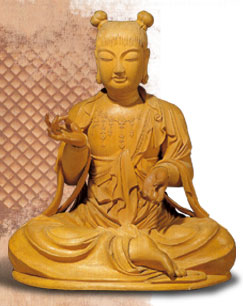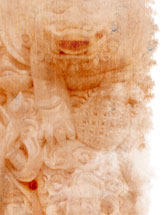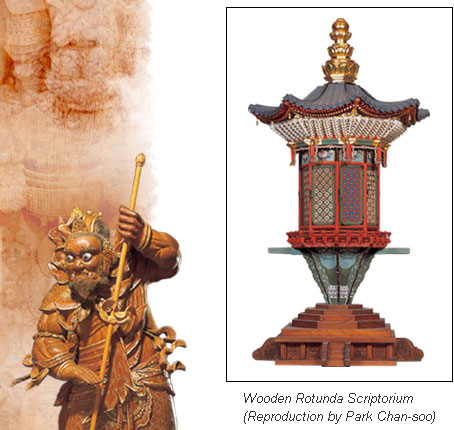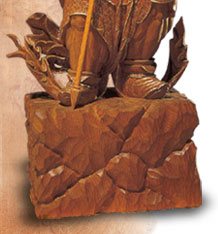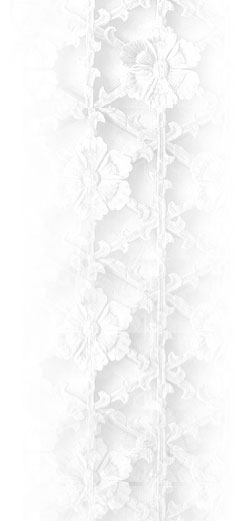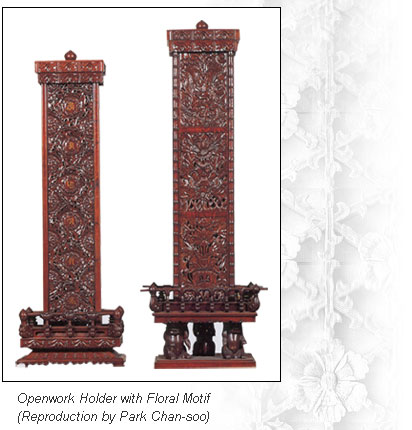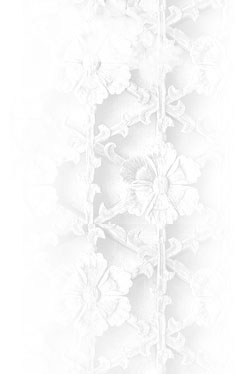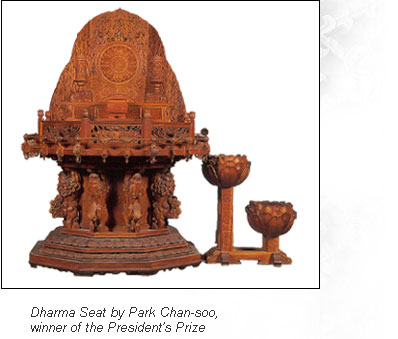| Park’s talent caught the attention of Kim who, before long, began to teach him not only practical carving skills but also an important philosophical lesson about the vocation: “The life of a woodcarver would never be easy, but you should consider woodcarving as your mission and use all your resources to contribute to the preservation and mission of woodcarving and basic woodcarving skills, while from Yi he gained knowledge of the theory and practice of plastic arts in general, which would become a firm foundation for his life as a creative artist in the future. In 1967, Park Chan-soo held his first exhibition to acquire both the general public and critics’ opinion of his sculptures, and as a result received wide acclamations from the media. After that, he began his life as a professional sculptor and held annual solo exhibitions. Then he met Shin Sang-gyun, a sculptor who specialized in Buddha carving, and, through Shin, became attracted to the profound world of Buddha art, and woodcarving in particular. This influence led him to commit himself solely to the art of Buddha sculpture, and in 1972, Park opened his workshop close by Shin’s studio in order to learn more from his mentor. Shin’s art, which involved various materials including clay, plaster, and even cement, began to exert a significant influence upon Park for whom wood was a single dominant medium. The experience with Shin also inspired Park to introduce new ideas to his wood sculpture. history of Korean Buddhism as well as the stories behind each piece gave Park incredible joy. Gradually he began to immerse himself deeper and deeper into the Buddhist cultural heritage and create his own works of Buddha art within it. His remarkable achievements and sincere devotion as a Buddhist artist began to be well known through the many important awards and prizes he won from various art festivals and competitions, including the prestigious President’s Prize he received for his carving of a Dharma seat in the 1989 National Crafts Contest. In 1996, Park became a ‘Human Cultural Property’when the Korean government designated him as Master Wood Sculptor (Important IntangibleCultural Property No. 108), making him the first person to have such title in the art of woodcarving. This Dharma seat is a masterpiece for which Park Chan-soo utilized his entire capacity as a devoted artist and even held a 100-day prayer session before its design. The wood came from a Zelkova tree on Ido Island that had died after living for approximately 1000 years. Carrying a tree of such an enormous size to the mainland was a huge task in itself, and three boats were mobilized for the dangerous mission, during which they met strong winds and high waves. When the tree was cut into blocks, it spit out bullets and old coins from the depths of its core, breaking more than 30 saw blades and threatening the lives of the saw workers. In addition to the laborious preparation process, the wood demanded Herculean efforts from Park who spent three whole years transforming it into a magnificent work of Buddha art. View the master's works |
|||||||||||||
|













